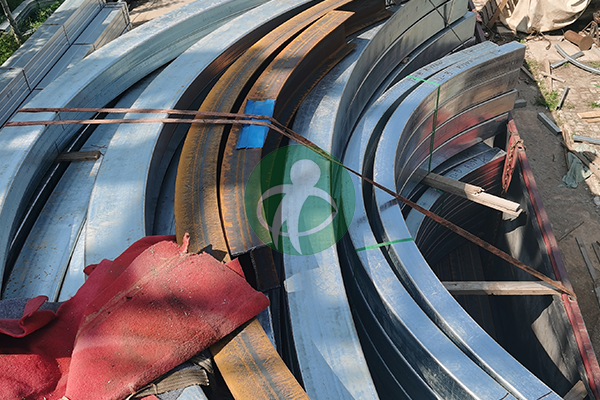Redefining the construction industry with innovative solutions, cuttin-edge technology and sustainable practices
Profile Bending 2025-08-16
As industries worldwide pivot towards more sustainable practices, the metal bending sector is no exception. Metal bending, a critical process in manufacturing, involves shaping metal materials into desired forms. However, this process can generate significant waste and energy consumption if not managed effectively.
1. Material Selection and Optimization
One of the primary avenues for enhancing sustainability in metal bending is the careful selection and optimization of materials. Using high-quality materials that have superior mechanical properties can reduce waste. For instance, advanced alloys and composites may require less material to achieve the required strength, allowing for thinner sheets and reduced scrap. Additionally, adopting materials that are recyclable or made from recycled content can further minimize environmental impact.
2. Design for Manufacturability (DFM)
Design for Manufacturability (DFM) is a critical approach that emphasizes designing parts with manufacturing processes in mind. By collaborating closely with engineers and designers during the initial stages, manufacturers can create components that are easier to bend and require less complex operations. This practice not only reduces material waste but also shortens lead times and the energy required for production. Utilizing computer-aided design (CAD) software can help visualize and optimize designs before physical production begins.
3. Advanced Bending Techniques
Advancements in bending techniques have significantly improved efficiency and reduced waste. Techniques such as laser-assisted bending and robotic bending enable precise control over the bending process, ensuring accuracy and reducing the likelihood of defects. These methods not only optimize material usage but also enhance productivity by minimizing the need for reworks and adjustments.

4. Process Automation and Smart Manufacturing
Integrating automation and smart manufacturing technologies into the metal bending process can lead to substantial efficiency gains. Automated bending machines equipped with sensors and feedback systems can monitor performance in real time, adjusting parameters to optimize the bending process dynamically. This capability reduces the risk of errors, decreases material waste, and enhances overall production efficiency.
Moreover, data analytics can be employed to track production metrics, identify inefficiencies, and predict maintenance needs. Such insights facilitate continuous improvement, allowing manufacturers to refine their processes and reduce waste over time.
5. Waste Management and Recycling
Effective waste management is a cornerstone of sustainability in metal bending. Manufacturers need to establish protocols for collecting and recycling scrap metal generated during the bending process. Many companies are adopting closed-loop systems where scrap is collected, processed, and reused in new production runs. This not only reduces waste but also lowers material costs and the environmental footprint associated with sourcing new materials.
Additionally, training employees on proper waste segregation and recycling practices can foster a culture of sustainability within the organization, further enhancing waste reduction efforts.
6. Energy Efficiency
Reducing energy consumption is another vital aspect of sustainable metal bending. Manufacturers can implement energy-efficient practices such as:
-Upgrading Equipment: Investing in modern, energy-efficient bending machines that consume less power can lead to significant savings over time.
-Regular Maintenance: Ensuring that machines are well-maintained can prevent energy waste caused by inefficient operations or equipment malfunctions.
-Renewable Energy Sources: Transitioning to renewable energy sources, such as solar or wind power, can further reduce the carbon footprint of metal bending operations.
7. Employee Training and Engagement
Sustainability efforts are most effective when employees are engaged and well-informed. Providing training on sustainable practices, efficient operations, and waste reduction techniques can empower employees to contribute actively to sustainability goals. Encouraging feedback and suggestions from the workforce can lead to innovative ideas and improvements in processes that may not have been previously considered.
In conclusion, adopting sustainable practices in metal bending is not only beneficial for the environment but also enhances operational efficiency and cost-effectiveness. By focusing on material optimization, advanced technologies, waste management, and energy efficiency, manufacturers can significantly reduce their environmental impact while improving their bottom line. As the industry continues to evolve, embracing sustainability will be essential for long-term success and competitiveness in the global marketplace. Through collective efforts and innovative practices, the metal bending sector can lead the way toward a more sustainable future.